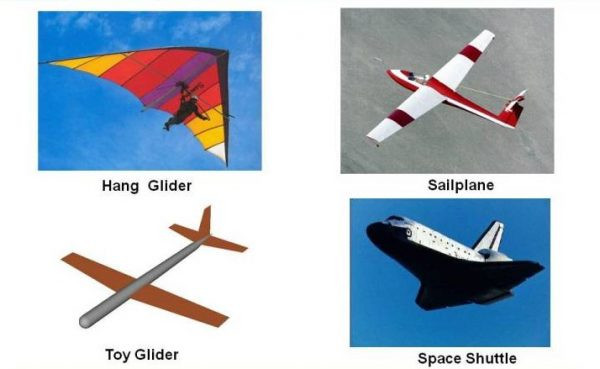Have you ever watched a bird effortlessly soar through the sky without flapping its wings and wondered how it’s done? This is the essence of gliding, a fascinating aspect of flight that’s not just for birds, but for aircraft too. While we often associate airplanes with powerful engines and thrust, understanding how gliders operate reveals some fundamental principles of aerodynamics. This article will explore the world of gliders, examining how these engine-less aircraft take to the skies and stay aloft, and in doing so, shed light on whether airplanes themselves can glide.
 A sleek sailplane glider gracefully ascends in a vibrant blue sky, showcasing the elegance of engine-free flight.
A sleek sailplane glider gracefully ascends in a vibrant blue sky, showcasing the elegance of engine-free flight.
What Exactly is a Glider?
A glider is a unique type of aircraft distinguished by its lack of an engine. This might seem counterintuitive – how can something fly without an engine? The answer lies in clever design and the exploitation of natural forces. Gliders come in various forms, from the simple paper airplanes we fold as children to sophisticated sailplanes capable of long-distance flights. Think of a basic paper airplane – with just a throw, it can glide through the air. Moving up in complexity, balsa wood or Styrofoam toy gliders offer a hands-on way to learn about aerodynamics. Hang-gliders, with their fabric wings, allow pilots to experience the skies directly. Sailplanes are perhaps the most advanced form of gliders, resembling conventional airplanes in structure but without the engine, equipped with flight control systems for precise maneuvering. Even the Space Shuttle, upon its return to Earth, relies on gliding for landing. Historically, the Wright Brothers, pioneers of powered flight, honed their understanding of flight through extensive glider experiments in the early 1900s.
The Three Core Forces in Gliding
While powered airplanes contend with four forces – lift, drag, weight, and thrust – a glider operates with just three: lift, drag, and weight. Both types of aircraft must overcome gravity (weight) and air resistance (drag) to achieve flight. The crucial difference lies in thrust. A powered aircraft’s engine generates thrust to propel it forward and counteract drag. A glider, however, lacks this engine-generated thrust.
Generating Lift Without Thrust
For any aircraft to fly, it must generate lift, an upward force that opposes its weight. Lift is created by the movement of air over the wings. To achieve this movement, a powered airplane uses thrust. But how does a glider move through the air to generate lift without thrust? The motion of a glider through the air inherently creates drag, which, without thrust to counter it, causes the glider to slow down. Eventually, the glider will lose speed to the point where it can no longer produce sufficient lift to overcome its weight, and it will descend.
Achieving Flight Velocity for Gliders
So, if gliders don’t have engines, how do they gain the initial velocity needed to fly? For simple gliders like paper airplanes and balsa models, the initial throw provides the necessary velocity. Larger balsa gliders might use rubber band catapults or tow lines for a stronger launch and some initial altitude. Hang-glider pilots often launch themselves by running and jumping from elevated positions like hills or cliffs. Sailplanes, and some hang-gliders, are typically towed into the air by a powered aircraft and then released to begin their glide.
This tow from a powered aircraft gives the glider potential energy – energy stored due to its height. As the glider descends from a higher to a lower altitude, it converts this potential energy into kinetic energy, which is the energy of motion, or velocity. It’s important to understand that gliders are always descending relative to the air around them. They are constantly trading altitude for forward motion.
Staying Aloft: Riding Updrafts and Thermals
If gliders are always descending, how can they stay in the air for hours, even gaining altitude? The secret lies in their efficiency and the skillful use of rising air. Gliders are designed to be incredibly efficient, meaning they descend very slowly. If a glider pilot can find a pocket of air rising faster than the glider is descending, the glider will effectively climb, gaining altitude and potential energy. These pockets of rising air are known as updrafts.
Updrafts can form when wind is forced upwards by geographical features like hills or mountains. Another type of updraft is a thermal. Thermals are columns of rising hot air created when the sun heats the ground unevenly, particularly over dark land masses. This warmed air becomes less dense and rises. Large birds like hawks and owls are often seen circling within thermals, gaining altitude effortlessly without flapping their wings. Glider pilots employ the same technique, circling in thermals to climb higher and extend their flight time, showcasing a beautiful dance with nature’s atmospheric currents.
In conclusion, while airplanes primarily rely on engine power for sustained flight, the principles of gliding are fundamental to understanding flight itself. Gliders demonstrate how lift, drag, and weight interact, and how skillfully utilizing natural phenomena like updrafts and thermals can enable prolonged engine-free flight. So, to answer the initial question, airplanes are designed for powered flight, but they can indeed glide, especially in emergencies when engine power is lost. However, gliders are specifically engineered to master the art of gliding, showcasing an elegant and efficient form of aviation.